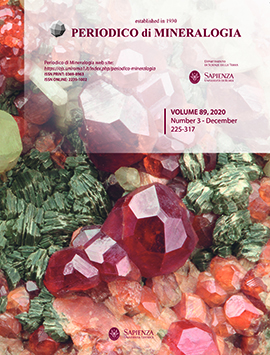Archaeometric investigations on the sarcophagus no.1993/74 in the Diachronic Museum of Larissa, Thessaly, Central Greece: I. Characterization and provenance of the marble
Keywords:
Marble, Provenance, Isotopes, Paros island, Larissa, ThessalyAbstract
An exceptional marble sarcophagus was found in Larissa (Thessaly, Central Greece) and is kept in the Diachronic Museum of Larisa (inv. no. 1993/74). The marble is white and semi-transparent under the sunlight comprising a medium-grained rock with visible calcite crystals. It consists mainly of calcite (>99%) with traces of white mica (muscovite or phlogopite), apatite and quartz. It exhibits a granular heteroblastic texture, with straight to curved grain boarders. The maximum grain size of the calcite crystals is 2.5 mm. The C-O isotopic results of two marble samples from the sarcophagus are similar (δ18O=-0.82‰, δ13C=+2.06‰ and δ18O=-0.66‰, δ13C=+2.02‰). Combining all these data it is concluded that the marble used for the sarcophagus is from Paros island.Downloads
Published
2020-08-03
Issue
Section
ARCHAEOMETRY and CULTURAL HERITAGE


